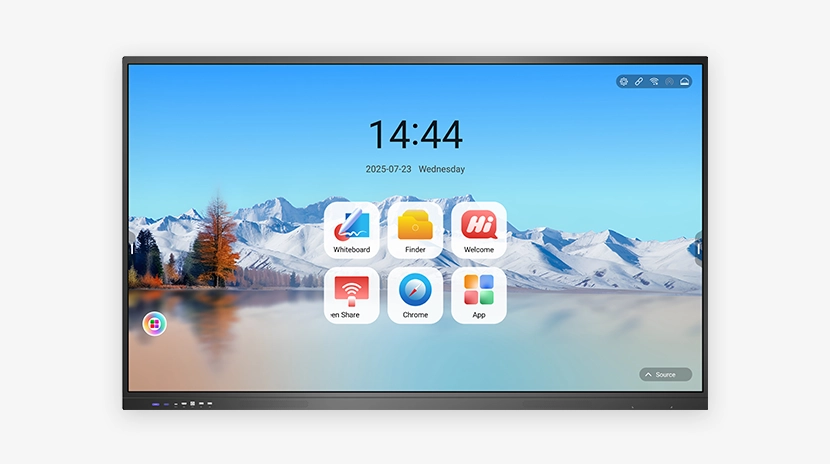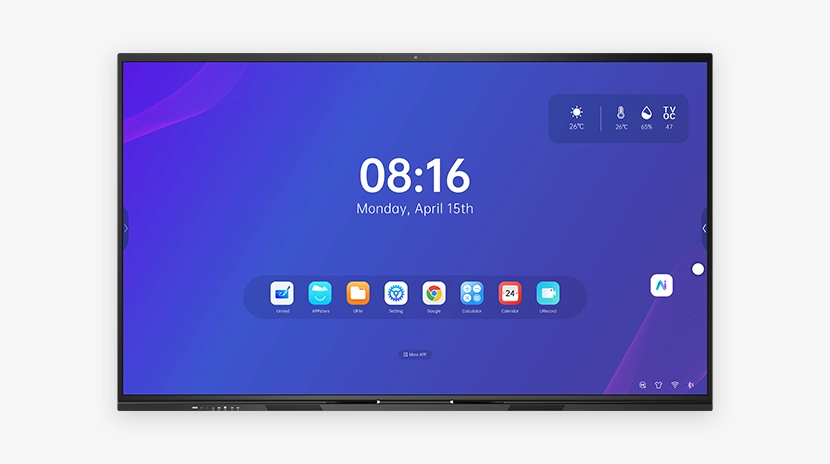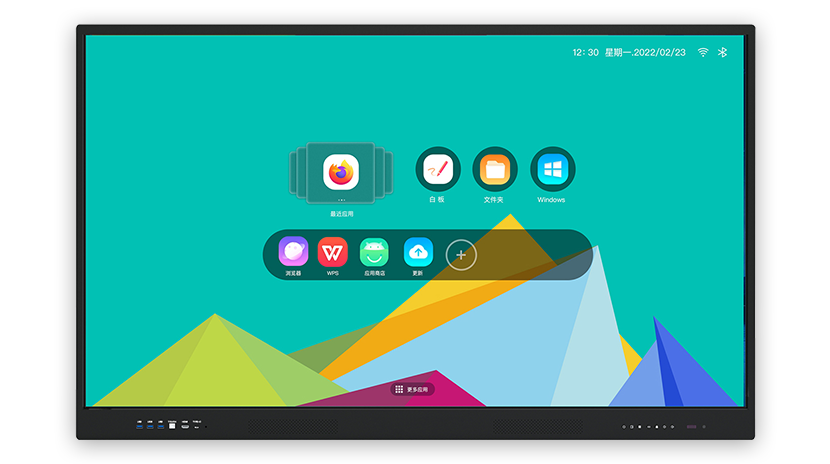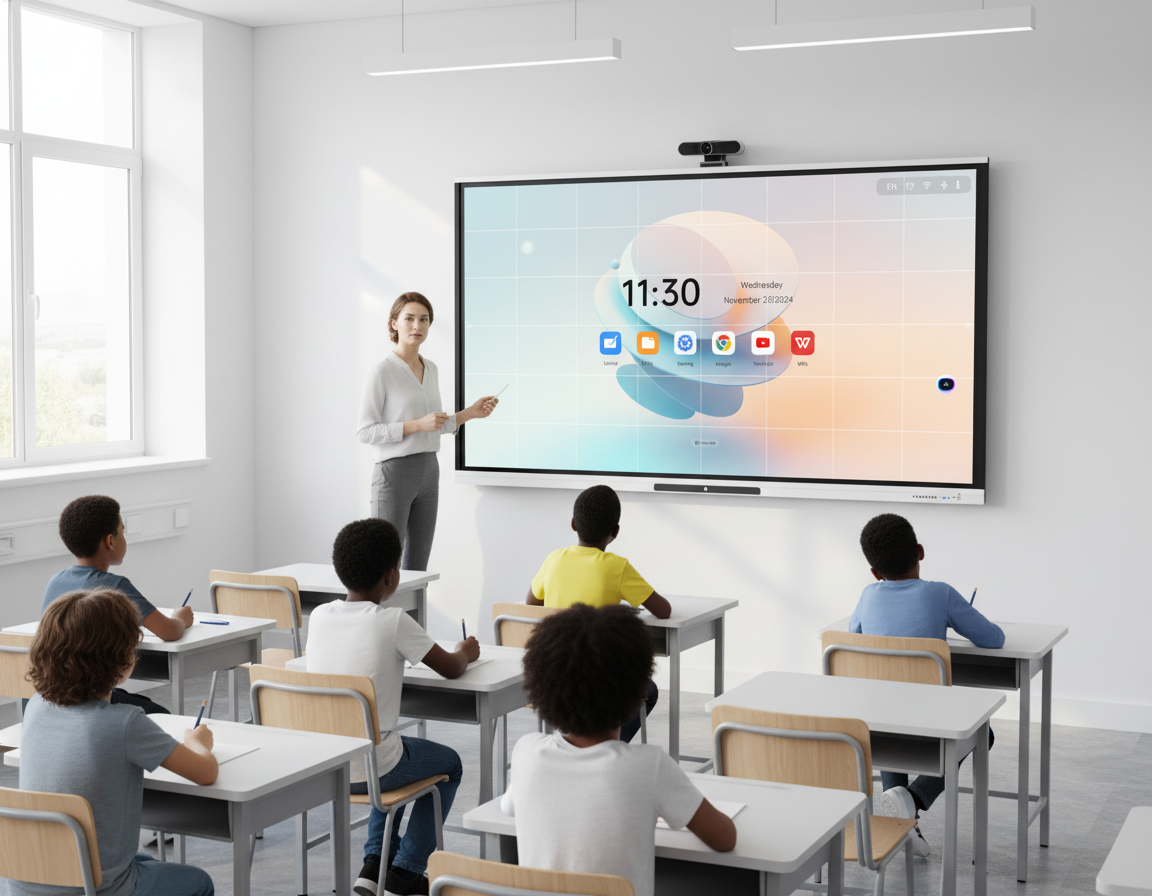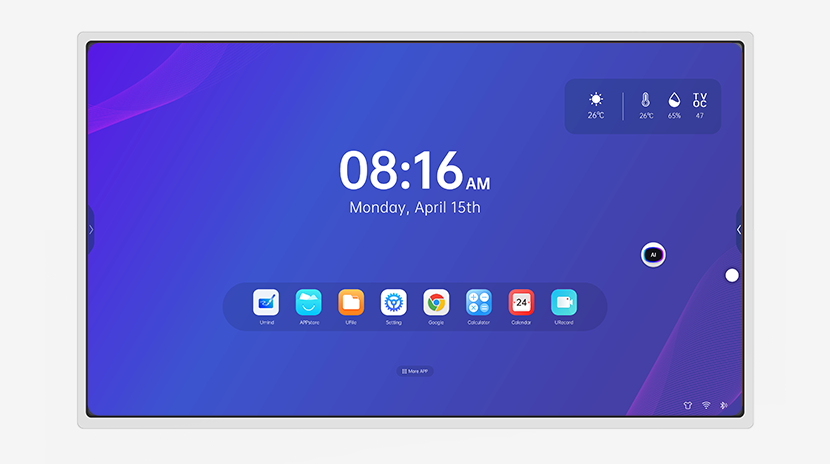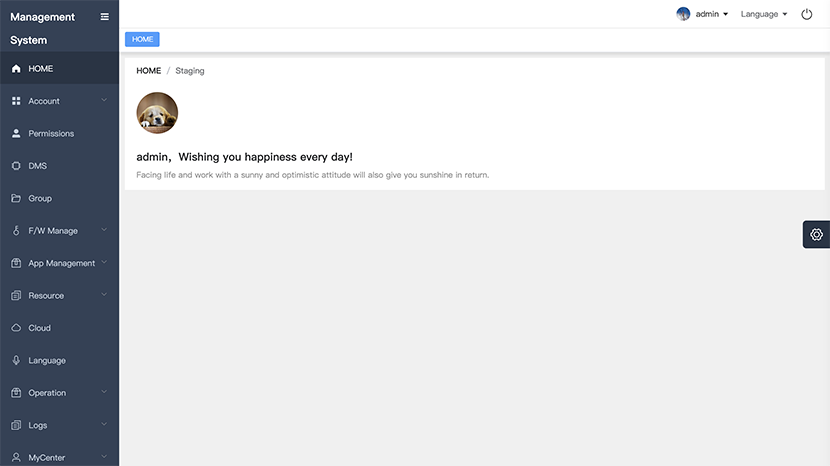- UMind
- UFile
- Setting
- DMS
- Pick-up System
- URecord
- UCut
- UMark
- Tools
- UTimer
- UVote
- UFreeze
- UPlay
- UPicture
- UCalculator
- Calendar
- IFPD
- LED Commercial Display
- Smart Blackboard
- IWB
- Smart Table
- Advertising Screen
- Portable Panel
- Smart TV
- OPS
- Accessories
- RK3588
- RK3576
- T982
- ADV100
- LTK
- LTQ
- LTF
- U+ Series
- LT Series
- LT Series S98
- LT86 S982 SA
- M86LB
- M86
- S82
- P82
- Smart Touch Table
- Smart Lifting Touch Table
- Floor Kiosk
- Portable Panel
- LTS
- OPS
- OPS 13th_14th
- Meeting pod
- TV stand
- Cloud Solution
- ODM/OEM Solution
- CKD/SKD Solution
- Education Solution
- Business Solution
- About Us
- Blogs
- Catalogs
-
Daisy OS

-
Products

-
Solutions

-
Support
-
About Us

From Infrared to AI Touch: Understanding the Evolution of Touch Technology
Touch Technology: The Core of Smart Interaction
Touch technology has revolutionized the way we interact with digital content — from smartphones to interactive flat panels and smart boards for education.
At the heart of every interactive display lies a touch system that translates human gestures into digital commands.
Today, we’ll explore the three main types of touch technologies shaping modern smart displays:
- Infrared (IR) Touch
- Capacitive Touch
- Advanced Touch Technologies (InGlass, Optical Bonding, AI-enhanced Touch)
Infrared Touch Technology — Reliable and Cost-effective
How It Works:
Infrared touch screens use a grid of infrared light beams that span across the display surface. When a finger or stylus interrupts these beams, the system calculates the X and Y coordinates of the touch point.
Advantages:
Durability: Works through any non-metallic surface — even glass up to 10mm thick.
Multi-touch Support: Can detect multiple touch points simultaneously.
No Pressure Required: Responds to any object (finger, pen, glove).
Cost-effective: Ideal for large-size displays such as interactive flat panels and smart classrooms.
Use Case:
Riotouch’s interactive education displays often use infrared technology for reliable, high-precision performance in classroom and conference environments.
Capacitive Touch Technology — Precision and Sensitivity
How It Works:
Capacitive touch screens rely on electrical charge changes. When your finger touches the surface, it alters the local electrostatic field, allowing the system to pinpoint the exact position.
Advantages:
High Accuracy and Smoothness: Perfect for handwriting and fast gesture control.
Thin and Sleek Design: No need for large bezels.
Strong Light Transmission: Delivers sharper, more vibrant displays.
Multi-touch Recognition: Excellent for complex gestures and precision drawing.
Use Case:
This technology is commonly used in smartphones, tablets, and high-end conference displays, where smooth touch experience and writing accuracy are key.
Riotouch integrates capacitive touch in its advanced Smart Blackboard and Smart Conference Panels, providing ultra-responsive writing and natural pen-on-paper feel.
Advanced Touch Technologies — Smarter, Faster, and More Immersive
Touch innovation doesn’t stop with infrared or capacitive. New technologies have emerged to make interaction even more natural and intelligent.
InGlass Touch:
InGlass uses invisible light waves within the glass to detect touch points.
- Ultra-high precision — detects pen pressure and stylus tilt.
- Zero parallax — perfect writing alignment, no visual gap between pen tip and content.
- Ideal for professional drawing and teaching where accuracy matters.
Optical Bonding:
Optical bonding removes the air gap between glass and display, improving visual clarity and touch response.
- Better visibility under light
- Faster response and less reflection
- Enhanced durability and water resistance
AI Touch Enhancement (Emerging Trend):
AI-powered algorithms are being used to:
- Identify palm rejection during writing
- Differentiate between finger, pen, and accidental touch
- Predict touch paths for smoother strokes
Riotouch is integrating AI touch optimization into its future smart boards — ensuring faster, more accurate recognition and seamless interaction for both education and enterprise environments.
The Future of Touch Is Intelligent
From infrared grids to capacitive sensors and now AI-enhanced systems, touch technology has evolved into an intelligent interface bridging humans and digital environments.
Riotouch continues to lead this transformation by combining the stability of infrared, the sensitivity of capacitive, and the intelligence of AI touch systems, creating smarter, more immersive interactive displays for classrooms, boardrooms, and beyond.
Riotouch — redefining interaction through innovation.


















